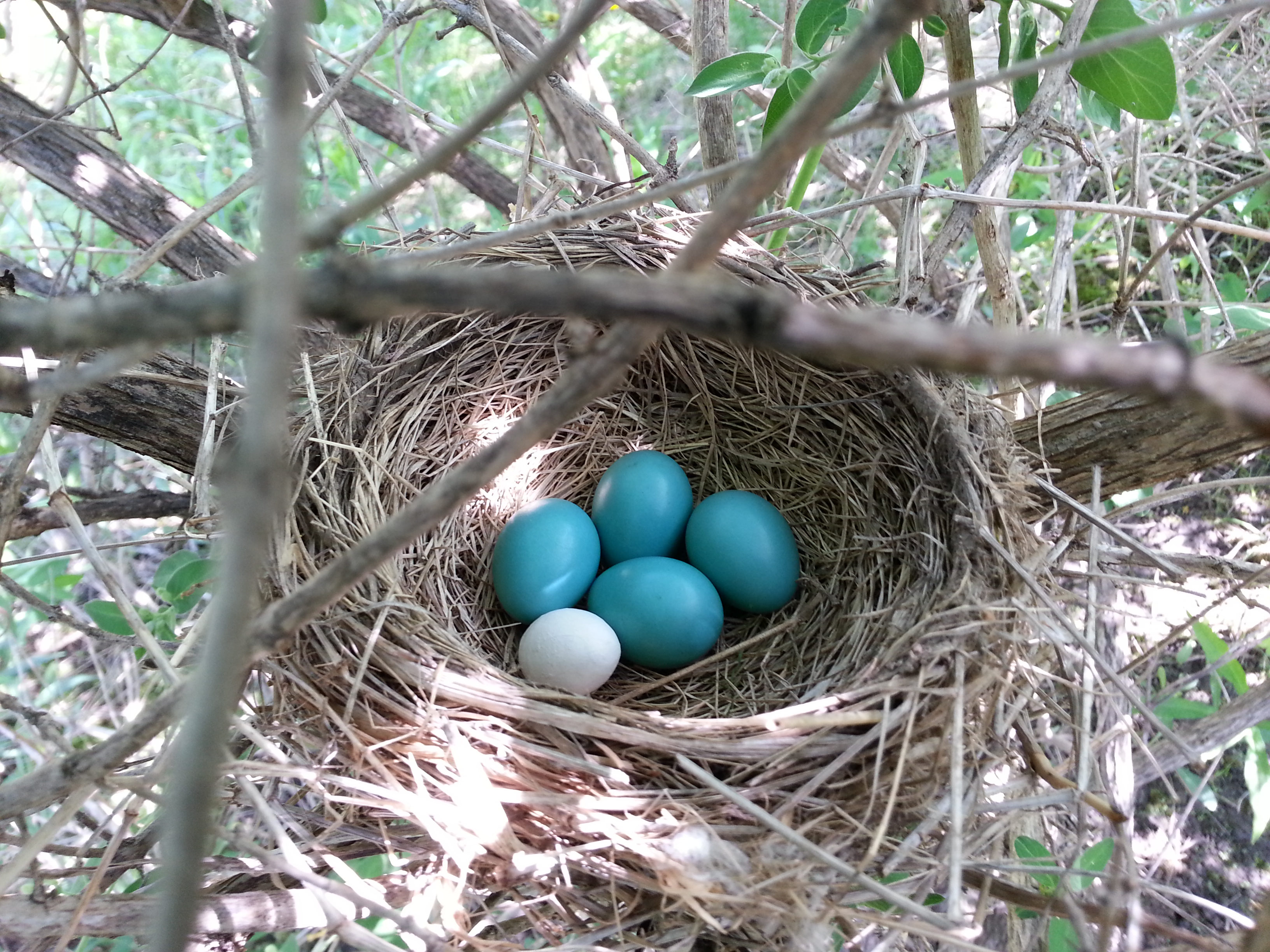Today we published “Using 3D printed eggs to examine the egg-rejection behaviour of wild birds”. In this study, First author Branislav Igic, co-author Mark E. Hauber, and their colleagues utilized 3D printed eggs as a method of making artificial eggs to research bird behavior.
Branislav Igic and Mark E. Hauber comment on their research and experience publishing with us.
PJ: Can you tell us a bit about yourself?
BI: I’m a post-doctoral researcher at the University of Akron. I have a wide range interests. but am particularly interested in how and why animals communicate. Right now I’m studying how birds produce colorful eggshells and feathers.
MH: I’m an ornithologist, I am working at Hunter College’s Animal Behavior and Conservation program in New York City as a professor.

1/2 way done–3D printing artificial eggs
image credit: Miri Dainson and Rob Pecchia
PJ: Can you briefly explain the research you published in PeerJ?
BI: American robins are parasitised by brown-headed cowbirds, birds which lay their eggs into robin nests in an attempt to get them to raise their offspring. However, robins are really good at identifying cowbird eggs and removing them from their nests. My co-authors and I used 3D printing technology to design artificial eggs to help us identify the types of cues used by American robins to identify parasitic eggs in their nests. In particular, we highlight the usefulness of 3D printing to egg rejection research and provide a detailed protocol so that other researchers can utilize this amazing technology in their research.
MH: 3D printing technology is revolutionizing not only biomedical research and the arts, but also behavioral ecology–our research is a demonstration of how standard printing and small alternation can be used to explore critical questions in evolutionary and behavioral ecology. Specifically, we used 3D printed eggs and color and size manipulations to experimentally test which egg traits contribute to the recognition and rejection of foreign eggs from nests of American robins, a common backyard bird.
PJ: Do you have any anecdotes about this research?
BI: American robins are really funny birds! I have really come to appreciate their unique personalities and especially their tendency to build nests in the most hilarious of places. American robins are commensal with humans and often build their nests on human made structures. We found robin nests built underneath houses, under wicker baskets, on top of bird feeders, we even saw a bird trying her best to build a nest on an edge made by two open windows on someone’s house. Needless to say she wasn’t successful in her endeavor.
MH: The project originated with a course that coauthor Prof. Mande Halford taught at Hunter College, where students designed 3D eggs of different shapes and sizes but didn’t have the chance to test the effects of this variation in the field on wild birds’ behaviors.
PJ: What surprised you the most with these results?
BI: There wasn’t really too much that surprised us with the results, but at least for me, I didn’t realize how easy 3D printing was to use! Nowadays there are even commercial 3D printing services with which you can simply upload a digital 3D design and they ship you the end product.
MH: It was surprising that subtle size changes did not have an effect on egg rejection–only color seemed to be the explanatory factor for why eggs were accepted or rejected.
PJ: What kinds of lessons do you hope the public takes away from the research?
BI: 3D printing is already revolutionizing many aspects of our lives, and I think it’s only a matter of time till it’s so affordable that everyone will be using it for some aspect of their research.
MH: Embracing new technology early and efficiently can be beneficial for scientists and the progress of research.
PJ: Where do you hope to go from here?
BI: We are hoping to eventually make artificial eggs that are identical to real eggs in every shape or form.
MH: We are hoping to design eggs which have a 3D printed base but a thin layer to be pierced just like real eggs are!
PJ: If you had unlimited resources (money, lab equipment, trained personnel, participants, etc.), what study would you run?
MH: We would not only alter the shape and size as well as color of eggs, but also the shape and size as well as color of nests to see if these factors interact with each other.
PJ: How did you first hear about PeerJ, and what persuaded you to submit to us?
BI: I have been following PeerJ’s progress for a long time; the idea behind it is what first interested me. I too strongly believe science should be open and transparent and I applaud PeerJ’s staff for all the wonderful work they do.
MH: A colleague published in the journal with very positive experiences during the peer review process.
Timelapse video of a 3D model egg being printed
Video credit: Hunter College, CUNY Communication Office
PJ: How would you describe your experience of our submission/review process?
BI: The submission process was really straightforward and easy. I can’t believe how quickly it all went from submission to review to eventual publication, while still maintaining rigorous quality control.
MH: We had very constructive and helpful referees.
PJ: Did you get any comments from your colleagues about your publication with PeerJ?
MH: Yes, one of our already published colleagues suggested PeerJ as a friendly, efficient, and open access journal.
PJ: Would you submit again, and would you recommend that your colleagues submit?
BI: Yes definitely, it was a very enjoyable experience.
MH: Yes, definitely!
PJ: In conclusion, how would you describe PeerJ in three words?
BI: Fast, high-quality, professional.
MH: Efficient, helpful, exciting.
Join Brani and Mark and thousands of other satisfied authors, and submit your next article to PeerJ.


